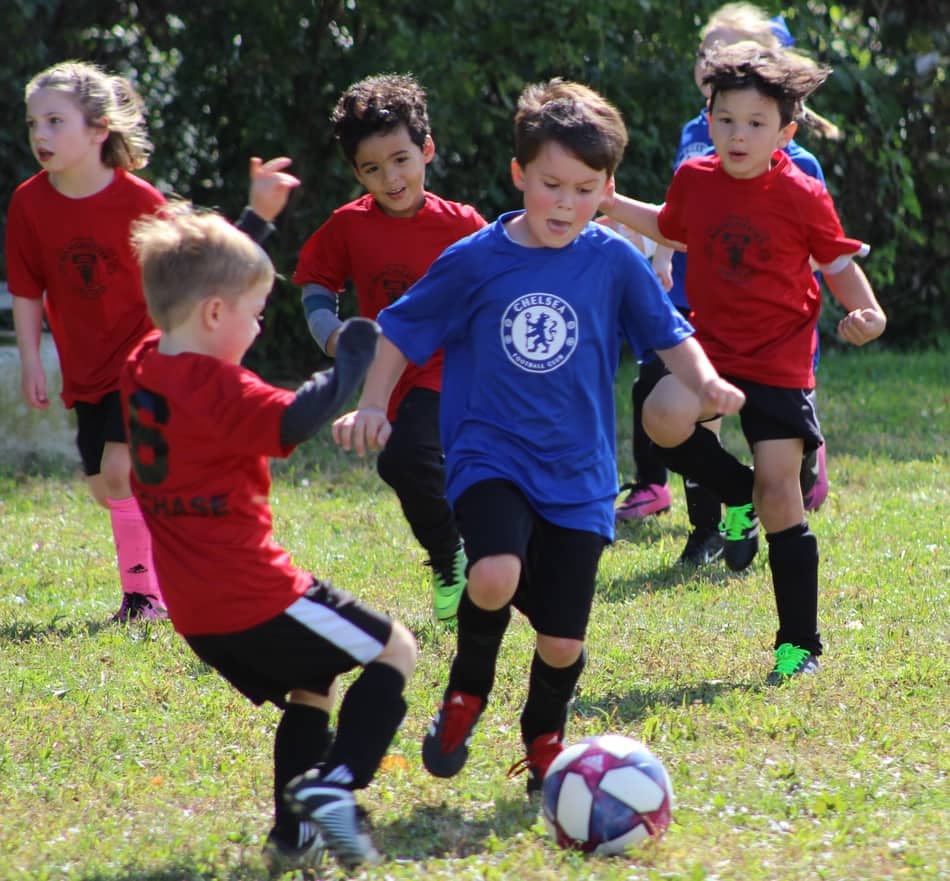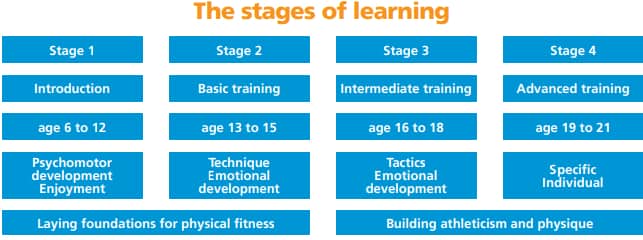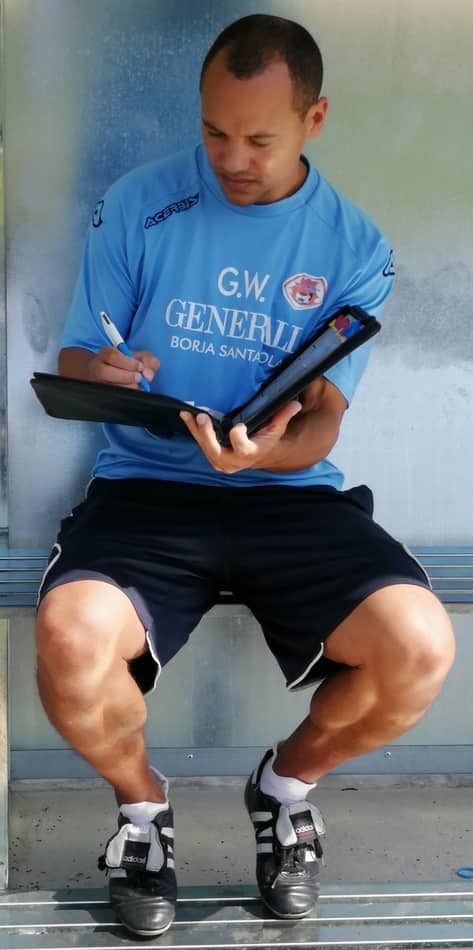You may need to learn how to plan a coaching session when coaching soccer.
For this reason, I am sharing the planning process as a guide for the beginner youth soccer coach while also showing you an example of a completed session and giving you a free template you can use for all your football session plans.
To plan a football (soccer) coaching session, a coach should follow these simple steps:
- Consider the player’s ages, ability levels, and the number of players training
- Decide on the main learning objectives
- Decide which coaching methods of practice to use
- Write the session plan
- Include a backup plan and improvisation ideas
While these steps may seem simple because you have broken down the procedure into stages, it is essential to understand the details of each one so that you can confidently create the best session plan possible.
CONSIDER THE PLAYER’S AGE, LEVEL, AND THE NUMBER OF PLAYERS

Age
Before planning soccer drills for your session, football coaches must consider players’ age and ability level. The age relates to the stage of a player’s learning, which you can see below:

Understanding what phase your players are currently in will help you choose appropriate activities that you can utilize.
Ability Level
The activities or training exercises you decide to do may need to be adapted to fit the level of your players. For example, use age groups for a specific category of a footballing training phase. There will be a wide range of ability levels between different teams of the same age group and may be within the same team. These ability variations mean differentiation within a training session might be required to develop their soccer skills.
Choosing an exercise or soccer drill that is too basic will lead to boredom and a lack of engagement amongst the team; a training exercise that is too difficult may lead to one or two players becoming demotivated due to a lack of success and could potentially cause a drop in self-esteem.
So make sure to find or create training exercises that will challenge the players but with the intention of the set goals being realistically achievable. This method will prevent feelings of failure from being too overwhelming for the players and help them develop intrinsic motivation.
Number of players training
The number of available players will significantly determine what you can or can’t do when training together in a team activity.
From personal experience, there have been plenty of times when I have planned a session a few days before the training, only to find text messages a few hours before the training begins stating that X number of players are unable to attend.
The lack of players will disrupt any tactical work you may have planned or big possession games that will change to small possession games. In addition, these changes will impact the physical demands due to smaller spaces and the number of players available.
Decide on the main learning objective.
To decide what to do in a football coaching session, you need to set an objective or primary learning outcome for the players.
An example of a main learning objective could be:
- Dribbling
- Shooting
- Defense working as a unit
- Counter-attacking
DECIDE WHICH COACHING METHODS OF PRACTICE TO USE
Based on the learning outcome of a session, a football coach will choose which coaching method to use to help the players achieve the learning objective. Each football coaching method has its advantages and disadvantages. Here is a list of four methods of practice:
- Part Practice
- Whole Practice
- Progressive Part Practice
- Whole Part Whole Practice
Part Practice – This is a way for coaches to break down skills to teach one Part of it before introducing the whole technique.
The simple act of practicing Part Practice can work wonders for people who are new to a skill. This method has proven especially helpful when an individual struggle with the task and needs that extra push to keep going.
A potential negative to Part Practice could be that a learner may take longer to acquire a skill than alternative methods.
Whole Practice – A coach uses this method to allow players to practice a skill without breaking it down. This method can be helpful because it helps learners experience the feel of different sporting techniques. Still, it could potentially lower the performance quality. Part of practice enables coaches to break down individual aspects of the sport into detail-oriented feedback sessions to improve technique and form.
Progressive Part Practice – A coach would build up the skill in parts until the player reaches the stage of performing the technique as a whole. A coach can achieve this by implementing stages of progression to add an extra facet to the skill or increase the difficulty level.
Whole Part Whole – The whole part whole is essential to a coach’s practice method. It focuses on observing an athlete in action, then developing and improving a specific aspect of a player’s game before bringing it back together with everything else they are doing at once.
An example of this could be when a coach sets up a possession game but observes players making many technical mistakes during practice. So a coach might stop the game and set up a more isolated drill, working on passing, that breaks the technique down before returning to the possession game where the players can practice what they have learned.
This method will improve the passing level from the first possession game.
WRITE THE SESSION PLAN

Your session plan should be a simple breakdown of the activities you will do, in which order, and for how long. It should also include the objectives and coaching points you must pass to the players.
Another critical factor is that the session has structure but allows players to express their abilities. The method could bring about enjoyment from your players as they would focus on improving their skills rather than being rigidly forced to follow directions all the time.

Please click here to download a free session plan template.
INCLUDE A BACKUP PLAN & IMPROVISATION IDEAS
Having a backup plan for your coaching sessions is an essential aspect of coaching. It will give you the confidence to know that if something goes wrong or things take a different direction than anticipated, you have a plan B up your sleeve.
I have arrived at many training sessions, for example, where somebody told me that I only have a small part of the pitch instead of the whole or half pitch, so I needed more space to set up the training session I had planned. Thankfully, in this situation, I regularly have a second training session with me for this reason.
You might also need to improvise regarding the number of players that have turned up for training. For example, you may have organized two rondos of 4v2 with the knowledge that you will have 12 players, but an extra player arrives. Therefore, one of the rondos can be adjusted by slightly increasing the playing area and adding a support player inside the square.
IN SUMMARY
For those of you who are just getting started in coaching, this will help.
While I have made some of my templates available feel free to create your own once you have become comfortable planning a session. Everyone has their style, and you should progress into yours, whether that is your practical coaching style, the templates you use to plan, record information, or simple team sheets.
Coaching is a journey, and you will become more confident as you progress through your early years. So I hope this blog post was helpful and can help you along your coaching journey.
Don’t forget to check out more blogs that might interest you, or look at the training drills you can use.
